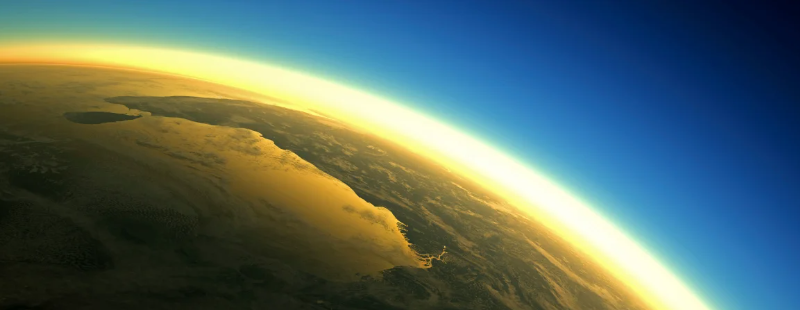Canadian scientist says he’s found a huge ozone hole over the tropics: A researcher from Canada has found a big hole in the ozone layer that is located above the tropical area of the earth and has the potential to affect fifty percent of the population of the world.
According to Qing-Bin Lu, a professor at the University of Waterloo, the hole is seven times larger than the famous Antarctic ozone hole that appears in the spring. The findings were written up and presented in the academic publication known as AIP Advances.
According to Lu, the findings of his investigation indicate that the enormous hole is there all throughout the year and has been there at least since the 1980s, which is nearly 40 years.
According to Lu, who was quoted in a press release, “The tropics constitute half of the planet’s surface area and are home to approximately half of the world’s people.” It is possible that the existence of the tropical ozone hole will generate a great deal of alarm all over the world.
The equator and portions of the continents of North America, South America, Africa, Asia, and Australia are all included in the tropics, which are regions of the Earth that span the middle of the world.
According to him, “the depletion of the ozone layer can lead to increased ground-level UV radiation, which can increase the risk of skin cancer and cataracts in humans. It can also weaken human immune systems, decrease agricultural productivity, and negatively affect sensitive aquatic organisms and ecosystems.”
The ozone layer is a natural layer of gas that exists in the stratosphere of the Earth. Its presence is essential to the continuation of life on Earth because it shields ourselves and other forms of life from the harmful UV radiation that is emitted by the sun.
Researchers in the 1970s discovered that certain industrial chemicals, such as chlorofluorocarbons (CFCs), agents in some aerosol sprays and refrigerants, and others, can accelerate the degradation of ozone. Although the process of ozone formation and destruction is an ongoing process, researchers discovered that certain industrial chemicals can speed up the process. The discovery of a hole in the ozone layer above the Antarctic in 1985 provided support for this notion.
The governments that existed at the time moved swiftly to outlaw a significant number of the harmful compounds, and the United Nations Environment Program (UNEP) stated just the year before that the cessation of usage of these chemicals was helping the ozone layer recover.
Lu and his team, they were able to find this latest hole by analyzing changes in annual ozone averages, differences in annual ozone climatology, and changes in temperature over the course of the last few decades. However, his findings have surprised other scientists because conventional photochemical modeling did not reveal the significant void.
If what has been discovered regarding ozone holes is correct, then this new discovery disproves a significant portion of that information.
The findings of the study have been called into question by a number of researchers who claim Lu’s procedures were inadequate.
According to Paul Young, a researcher at Lancaster University and the lead author of the most recent scientific assessment of ozone depletion (who was not involved with the study), Lu looked at percentage changes in ozone rather than absolute changes. This information was provided to the Science Media Centre.
“There is no such thing as a ‘tropical ozone hole,’ regardless of whether or not the author suggests that it is caused by electrons originating from cosmic rays. According to Young, “it is widely established that the long-term changes and year-to-year variability of the ozone layer in the tropical lower stratosphere are the results of both human-driven processes and natural factors.”
“The author’s identification of a “tropical ozone hole” is due to him looking at percentage changes in ozone, rather than absolute changes, with the former being considerably less relevant for damaging UV reaching the surface and the latter being much more relevant for absolute changes. It’s also interesting to note that his paper doesn’t draw from the large body of research that investigates and tracks ozone trends in all different parts of the atmosphere.
According to Martyn Chipperfield, a professor of atmospheric chemistry at the University of Leeds, he was “surprised that this work was published at all in its current form.” This statement was given to the Science Media Center.
He stated, “The outcomes of this investigation will generate a great deal of controversy, and I am not certain that they are accurate.” “The allegation that there have been such huge increases in ozone levels in tropical regions made in this research has not been apparent in other studies, which makes me highly skeptical. The validity of a scientific theory must never be predicated on a single piece of evidence, and the findings of this latest research must first be independently verified.
This study relies on earlier work that Lu and his colleagues had done on a theory on the depletion of ozone. Approximately twenty years have passed since the researchers began researching the cosmic-ray-driven electron reaction-initiated ozone-depleting mechanism (also known as CRE).
According to Lu, “the present discovery calls for further thorough investigations of ozone depletion, changes in UV radiation, higher cancer risks, and other detrimental repercussions on health and ecosystems in tropical places.”








